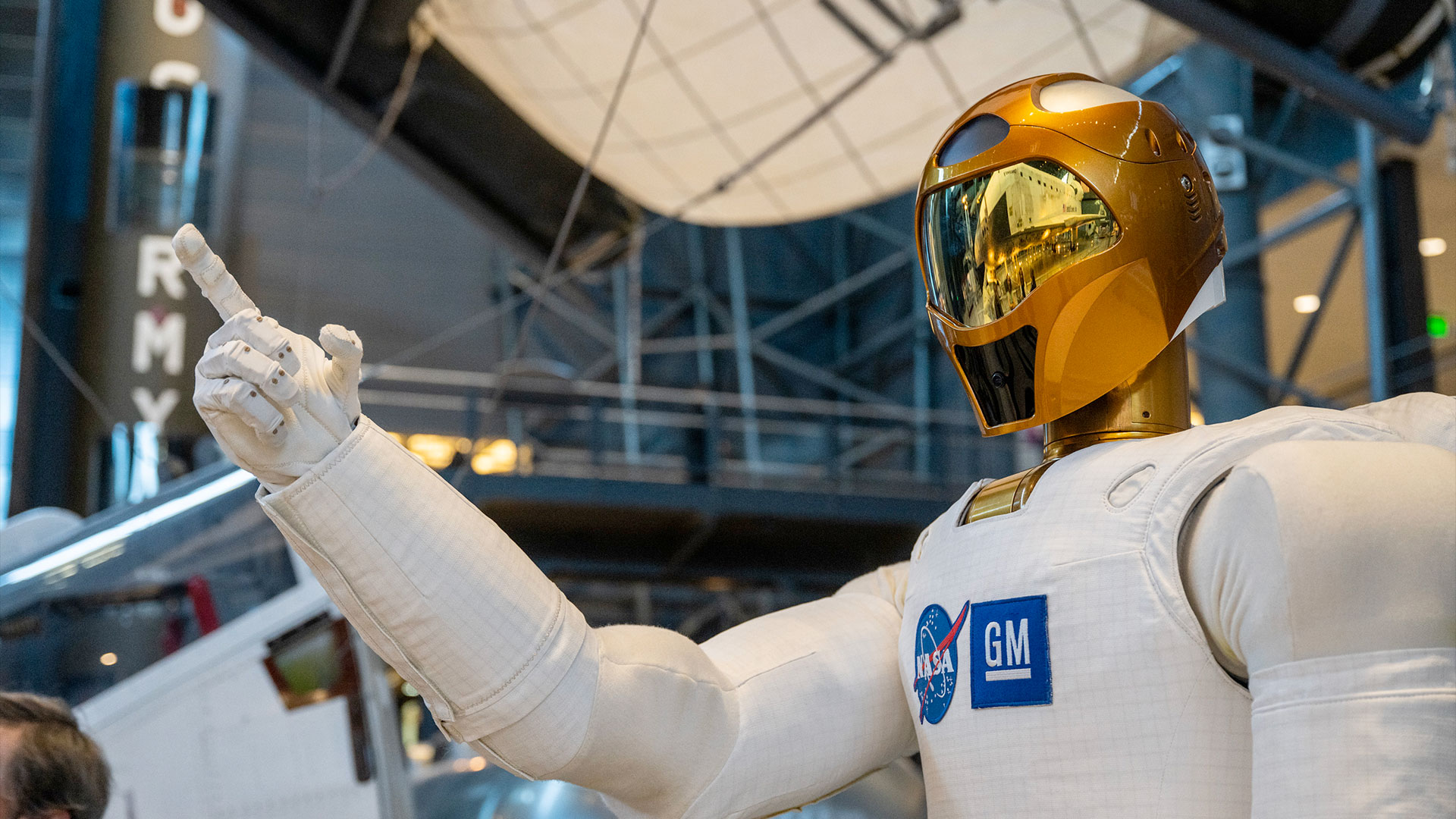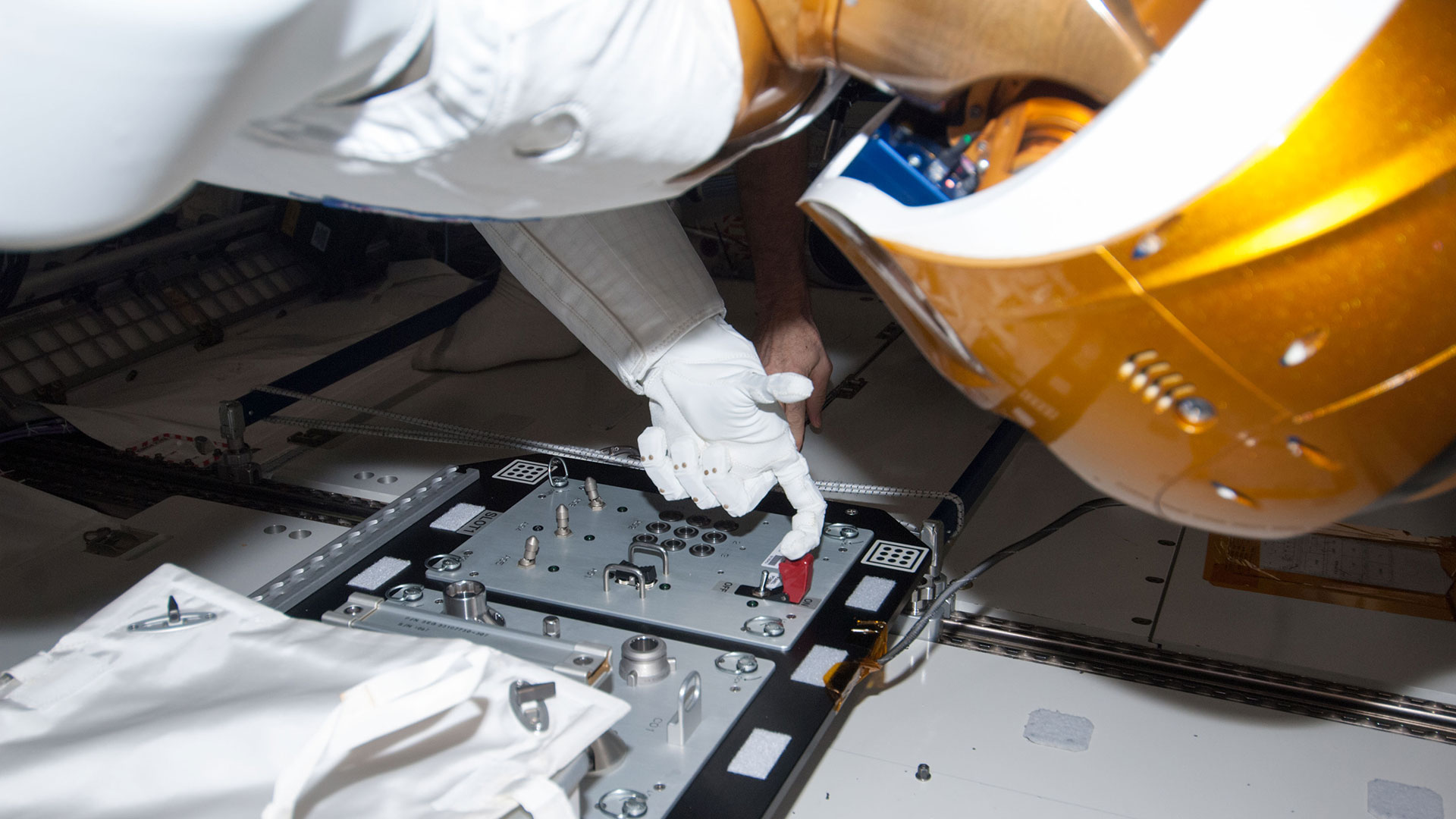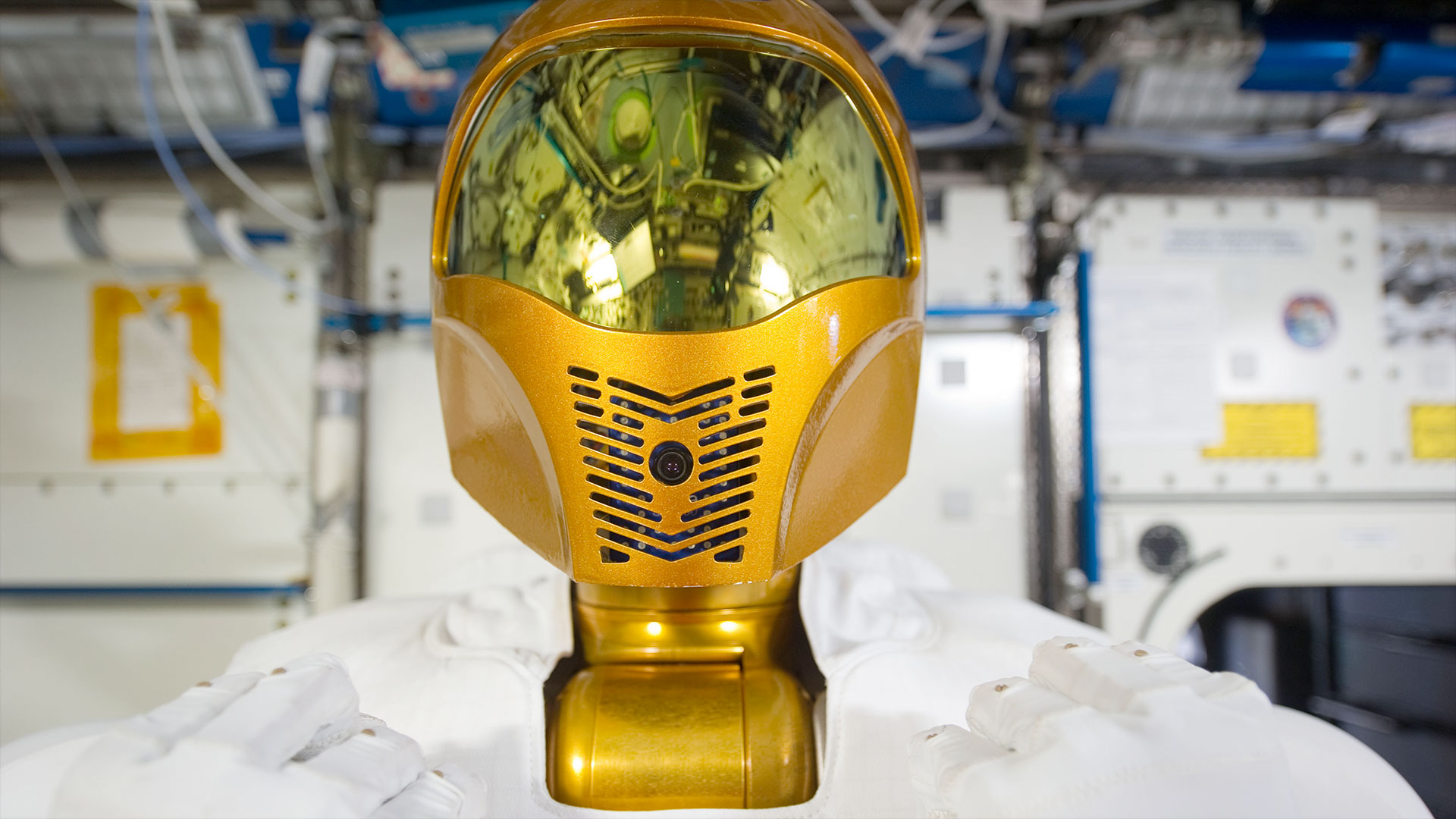NASA's Robonaut-2 reunited with its ride into space at Smithsonian
'R2 is looking straight at Discovery's starboard side...'

NASA's retired space shuttle Discovery has been reunited with one of its last crew members.
The Smithsonian's National Air and Space Museum debuted Robonaut-2 (R2), NASA's first dexterous humanoid robot flown into space, on Thursday (Oct. 24). The two-armed, two-legged robotic testbed launched to the International Space Station (ISS) aboard Discovery's final mission in 2011.
R2 is now on exhibit at the Smithsonian's Steven F. Udvar-Hazy Center in northern Virginia.
"R2 is looking straight at Discovery's starboard side," said Jennifer Levasseur, space history curator at the National Air and Space Museum, in an interview with collectSPACE.com. "It is has taken the place formerly occupied by Gemini 7."

NASA's Gemini 7 spacecraft had been in the James S. McDonnell Space Hangar at Udvar-Hazy Center since it opened in 2003. The 1965 two-seat capsule was relocated to the Air and Space Museum's flagship building on the National Mall in Washington, D.C. to become part of the "Destination Moon" gallery in 2022.
Related: In photos: Robonaut 2, NASA's robot butler for astronauts
R2 is exhibited out in the open next to the Gemini paraglider capsule and Apollo boilerplate command module.
"R2 is behind barriers, but like other artifacts in that area, it is not protected by glass or acrylic or anything like that," said Levasseur. "I'm really excited to see the possibilities with that."
"It has such a beautiful, reflective visor. I think there will be some pretty incredible selfies to come from it," she said.
To space or the Smithsonian
Developed in partnership with General Motors and Oceaneering Space Systems, R2 was designed to test how human-like robots could help astronauts with tasks on a space station. Though never realized, NASA envisioned a day when R2 could be moved outside of the ISS to perform simple or routine tasks, saving astronauts from performing some spacewalks.
Before that could happen, R2's component systems — from image recognition to control algorithms — needed to be verified in orbit. Working with a task board, R2 successfully demonstrated that it was able to press buttons, flip switches and turn knobs, as well as handle tools. An ISS crew member was also able to teleoperate R2, commanding it to catch a floating object.

When launched on Discovery's STS-133 mission, R2 only had an upper torso. Its two legs ("climbing manipulators") were added in 2014, which is when its problems began. The upgrades to support R2's new appendages triggered intermittent power failures and, even worse, NASA's attempts to troubleshoot the issue caused more electrical shorts.
As such, NASA decided to bring R2 back to Earth, so it could repaired and sent back to space. In 2018, the robot splashed down aboard a SpaceX Dragon spacecraft. The plan then was to quickly service R2, so its testing could resume on the ISS.
Instead, it remained grounded at NASA's Johnson Space Center in Houston.
"Other things took priority," Levasseur told collectSPACE. "Basically, things like a new toilet and other crew equipment took priority, and at some point the decision was made to give up on trying to get it back on the station."
The droid they were looking for
R2, as it now stands at the Udvar-Hazy, is complete.
"We have the legs. It is displayed as a single robot, put together on one of its engineering stands. It has its arms and legs extended," said Levasseur.
It is believed it is also back to being fully functional.
"I believe it has been repaired to the point of being 'operational,' but it will not operate while it is here," Levasseur said. "NASA engineers did activate certain joint systems during the exhibit's set up. They had to peel off some of the fabric overlay and then some of the metal or plastic panels that cover the interior components so that they could activate the joints to be able to reposition the arms."
Get the Space.com Newsletter
Breaking space news, the latest updates on rocket launches, skywatching events and more!

Levasseur has spent the past three years working on bringing R2 to the National Air and Space Museum. Technically, it could still be called back into service.
"It is on loan, so at least for the next four years, it will be on display here," said Levasseur. "NASA could recall the loan and go and potentially fly it to the station, but it doesn't seem as though that's really in the cards in terms of the availability of room on a spacecraft to take it back up."
"It has been accepted by our collections committee and approved by the director — that happened in 2021 — so the intention is, at least for us, we would like to see it transferred at some point," she said.
Follow collectSPACE.com on Facebook and on X at @collectSPACE. Copyright 2024 collectSPACE.com. All rights reserved.
Join our Space Forums to keep talking space on the latest missions, night sky and more! And if you have a news tip, correction or comment, let us know at: community@space.com.

Robert Pearlman is a space historian, journalist and the founder and editor of collectSPACE.com, a daily news publication and community devoted to space history with a particular focus on how and where space exploration intersects with pop culture. Pearlman is also a contributing writer for Space.com and co-author of "Space Stations: The Art, Science, and Reality of Working in Space” published by Smithsonian Books in 2018.In 2009, he was inducted into the U.S. Space Camp Hall of Fame in Huntsville, Alabama. In 2021, he was honored by the American Astronautical Society with the Ordway Award for Sustained Excellence in Spaceflight History. In 2023, the National Space Club Florida Committee recognized Pearlman with the Kolcum News and Communications Award for excellence in telling the space story along the Space Coast and throughout the world.










